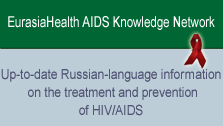Resources for Health Professionals and Patients
| Guidelines for establishing DOTS-PLUS pilot projects for the management of multidrug-resistant tuberculosis (MDR-TB) | |
Link to document(s) | http://www.who.int/docstore... |
Link to document(s) | http://www.who.int/docstore... |
Document type: | Guidelines |
Language: | English, Russian |
Original language of document: | English |
Publication date: | 2006 |
Primary area(s) of focus: | DOTS-Plus & MDR-TB, Advocacy, Communication & Social Mobilization (ACSM) |
Submited by: | Victor Stanilevskiy |
Material written specifically for patients: | No |
Date of entry: | October 5, 2006 |
Pages: | 53 |
| Worldwide, tuberculosis (TB), a disease caused by Mycobacterium tuberculosis, is the second greatest contributor among infectious diseases to adult mortality. The World Health Organization (WHO) estimates that two million deaths occur each year from the disease. Of equal note, one third of the world's population is infected with Mycobacterium tuberculosis. The WHO recommended strategy to combat TB, directly observed treatment, short-course (DOTS), can cure over 85% of patients with TB. Of concern, however, is the rise in drug-resistant TB and multidrug-resistant TB (MDR-TB). Several geographical settings with a prevalence of greater than 3% of MDR-TB among newly diagnosed cases have been identified by the WHO/International Union Against Tuberculosis and Lung Disease (IUATLD) Global Project on Drug Resistance Surveillance. In some countries, drug resistance threatens the success of TB control. In order to address drug-resistant TB in general and MDR-TB in particular, WHO (1999) created the Working Group on DOTS-Plus for MDR-TB. | |
Overall user rating: | Not yet reviewed |

 Print-friendly View
Print-friendly View

